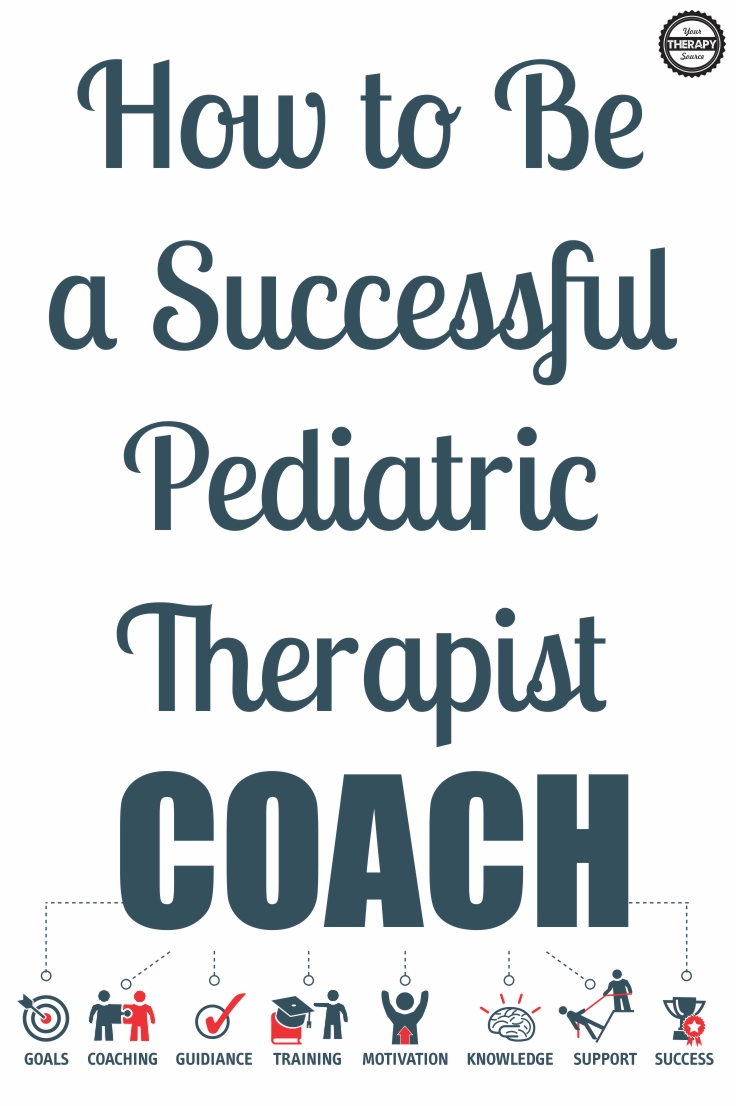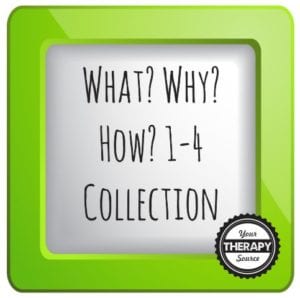How To Be a Successful Pediatric Therapist Coach

Are you confused by the question, how to be a successful pediatric therapist coach? Maybe you don’t coach basketball, baseball, tennis, etc so you are baffled. Think of coaching as another word for educate. If you are a pediatric therapist, you are involved with families, teachers and school support staff. Whether you work in the home as an early intervention provider, in a clinic or in the schools, a major part of your job is to educate parents or teachers on how to help children. Instead of a one time discussion or phone call with a parent or teacher to educate them on something regarding a child, coaching is an ongoing process. Most likely you are doing some form of coaching already you probably just didn’t call it that, you just called it your job!
Physical or Occupational Therapy Coaching Model
Here are additional details about a physical or occupational therapy coaching model. There are three domains to an occupational performance coaching model.
Domain One: Structured Process
Using a problem solving approach, goals are set for the family and the children. This step can be revisited at anytime throughout the coaching process. In addition, a collaborative analysis is performed by closely examining the actual activity. Using activity exploration and action planning, the pediatric therapist coach helps to determine what needs to change in order for the child to be successful.
Domain Two: Emotional Support
The emotional support domain in a physical or occupational therapy coaching model requires the therapist to (1) listen, (2) empathize, (3) reframe, (4) guide, and (5) encourage caregivers to discover solutions that will help the families and children achieve their goals.
Domain Three: Information Exchange
The pediatric therapist coach works on exchanging information with the caregiver on topics such as typical development, health conditions and impairments, task analysis, teaching and learning strategies, and information about community and other available resources.

The Busy Therapist Bundle
The Busy Therapist Bundle includes 7 digital download packets of hand outs covering a wide array of topics for school based occupational and physical therapists. The bundle includes over 100 hand outs to give to teachers and parents. Click on each link to view more information about the 7 titles:
- <a href="https://www.yourtherapysource.com/product/what-why-and-ho…
Tips for Implementing a Physical or Occupational Therapy Coaching Model
The basics of coaching include the three domains as mentioned above. Here are three tips when putting the plan into action:
- modeling of the desired behavior or outcome – therapist shows the parents, teacher or staff how to teach a certain skill.
- opportunities for practice by the learner – the parent, teacher or school staff practices the same skill you modeled while you are watching.
- providing feedback – you offer suggestions, tips and more demonstration if necessary to help scaffold learning.
To put these three basics into practice is not as easy as it seems as you probably know already. Time constraints is probably the biggest hurdle. Schedules are overpacked and sessions run overtime so the day is frequently spent running or playing catch up.
To begin with establish the learning goals that have been identified as a priority by the parents, teachers or children based on your setting. To work on a goal that you think is super important as the therapist but the children, families and teachers see as no issue is a waste of time. The top goal is to ensure you are all on the same page about the goal.
Try providing the coaching and practice within relevant contexts. This is the hardest part about a physical or occupational therapy coaching model due to our time and location constraints. This is easiest in an early intervention setting. Get creative here and try changing IEP requirements to minutes over a certain amount of days versus 30 minutes/3 times per week. Push into the classroom inviting school staff to model your behavior. Invite parents into the school so they can observe you directly. If these are still not an option, video yourself and the child (with permission) and provide a copy to the parent. Provide handouts and directions to the parents and teachers.
Make sure there is time for evaluative feedback and self-reflection. After you model teaching the desired skill, take the time to observe and provide feedback. Ask questions to the parents, teachers and children such as: what helped the most? did the handouts help? what can we improve? what are suggestions for the future?
A huge benefit to coaching is providing parents and teachers the skills to support their child’s learning throughout daily routines, which can lead to an increase in the caregiver’s involvement and follow through.
References: Branson, D. PhD. A Case for Family Coaching in Early Intervention. Young Exceptional Children. Vol 18, Issue 1, pp. 44 – 47. First published date: January-27-2015. doi 10.1177/1096250615569903
Diana Gantman Kraversky, OTD, MS, OTR/L, AP. Occupational Performance Coaching as an Ultimate Facilitator. Retrieved from the web on 6/20/20 at https://www.aota.org/~/media/Corporate/Files/Publications/CE-Articles/CE_Article_November_2019.pdf.
If you need hand outs and resources to use a physical or occupational therapy coaching model with parents and teachers to provide a review of the skill set or additional information, check out all of our resources here. Some specific hand out titles include:
What? Why? How? Series 1-4 Collection
Therapeutic PLAY Activities for Children
25 Tip Sheets for School Based Therapists






